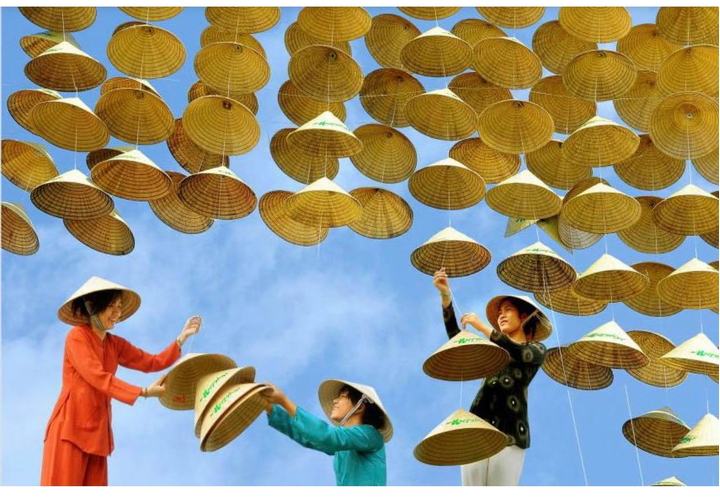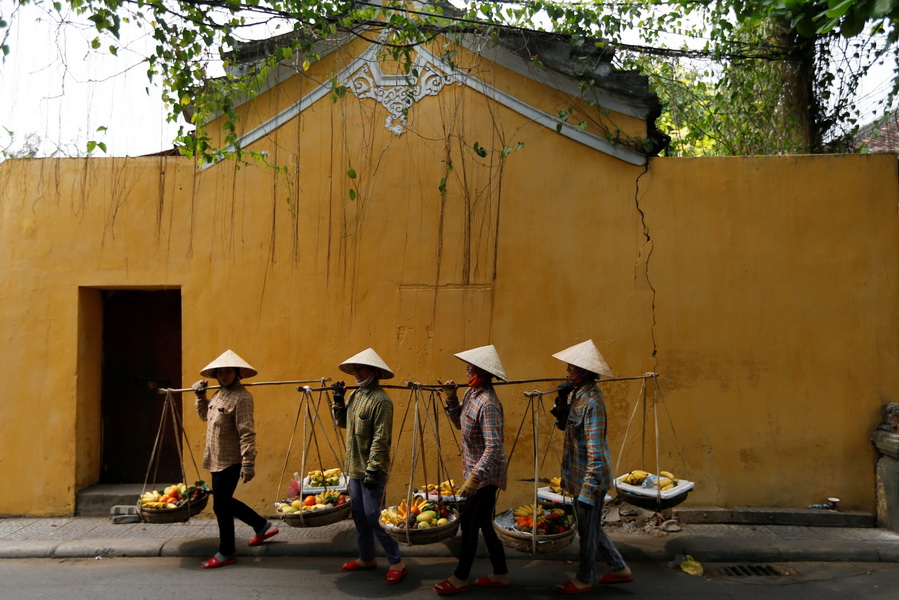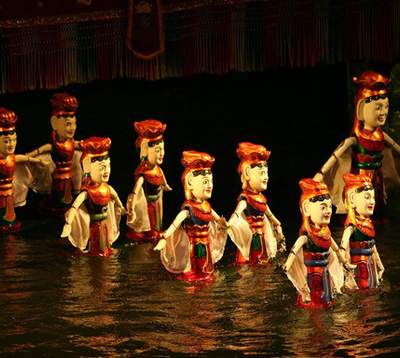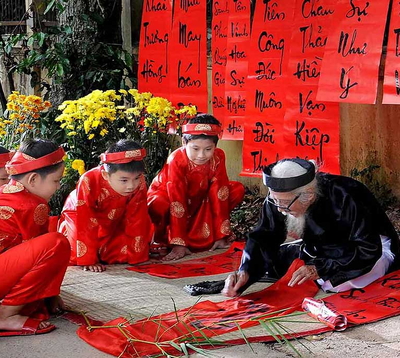Conical Hat - A Symbol Of Vietnam

If you've ever visited Vietnam, you may have wondered why the locals wear conical hats. These traditional Vietnamese symbols are still worn throughout the nation, however, they are more prevalent in the countryside than in the metropolis. Non la is the name of these Vietnamese hats.
The conical hat of Vietnam is more than just a recognizable national symbol. They are constructed to withstand rain and sunlight, and the techniques for making them have been passed down from generation to generation. The Vietnamese Non-La hat is an iconic, irreplaceable symbol. Handmade and worn through all four seasons, they are a lifelong companion.
In Saigon and Hanoi, fewer younger generations wear them, and therefore the custom is vanishing. In Hoi An, though, non la hats remain an integral element of the culture. Follow along to discover why people in Vietnam wear pointed hats and a bit about the history of the non la conical hat.
A Short History of The Vietnamese Conical Hat
Have you ever wondered where the non la hat originated in Vietnam? The conical hat has been worn for millennia and remains a traditional symbol of Vietnam.
Although conical hats are popular throughout Southeast Asia, it is believed that they originated in Hue, Vietnam. Given that they are portrayed on terracotta vessels older than 2,000 years, it is probable that they have been worn in some form for several millennia.

The conical hats worn by employees today are nearly identical in size and design. There is evidence to imply that this is a more recent development in the history of the hat, as historical photographs depict different varieties being worn by men, women, and people from all walks of life.
From attire to traditions to fruit, many things in Vietnam have their own mythology. Given that the conical hat is commonly worn by rice farmers in the country, it is not surprising that the hat's myth is associated with rice cultivation.
Once upon a time, there was a weather goddess in the sky who worked to protect the harvest from rain. To do this, she wore four enormous leaves on her head, which allowed the rain to drain off and protected the crop. Thus, the unique design of the conical hat was inspired.
How to Make Vietnamese Conical Hat?
Vietnamese conical hats are often made from inexpensive natural materials that withstand extreme heat and humidity. Palm and bamboo leaves are the most preferred materials. The framework is often composed of bamboo, and then dried leaves are weaved into the hat in a way that renders it almost waterproof. Typically, hats are adorned with a rattan, cotton, or silk ribbon. If the hat is used for ceremonial reasons, ribbons may have a vibrant hue.

Initially, the framework of the hat is constructed using ribbed bamboo canes and string. For the covering, palm leaves are sun-dried, then partially roasted on a hotplate and pressed with a heavy object. This makes them far simpler to weave appropriately. Leaves are chopped to size and attached with additional bamboo canes to the framework. Afterward, the second layer of shinier leaves has adhered on top. Each hat takes between three and four hours to hand-stitch the leaves in place.
Making a conical hat requires years of experience, and agricultural families often make them in between shifts as a means of earning additional revenue. Makers begin learning their skills as youngsters, and it may take years to master their technique and guarantee that the weave thoroughly repels the elements.

Despite the number of hats on display in Hoi An, only a few individuals are responsible for their creation. Each town will have its specialists, but for most, the time required to create a durable hat is not worth the profit margin.
What Are The Advantages of Conical Hat?
There are several applications for the conical hat. As with any other hat, you wear this one to shield your head from the sun's powerful rays. But since the conical hat is varnished with a coating of water-repellent, it also functions as a little umbrella, shielding you from the rain.

Additionally, you may be creative with it. When the conical hat is turned upside down, it becomes a suitable basket for carrying little products from the market or a small bit of water. During hot summer days, the conical hat functions as a cooling device; you may wet the hat, wear it, and let the evaporation cool your head, or you can use it as a handy fan. The versatility, portability, and affordability of a basic conical hat have made it the most popular headgear in Vietnam, particularly among farmers and street vendors.

The conical hat is also a fashion icon of Vietnam. It is less common to see a conical hat in urban regions than in rural areas, although many young girls still wear "ao dai" or "ao ba ba" with conical caps during photo sessions at Notre Dame Cathedral and festivals in Ho Chi Minh City. The simplicity of the conical hat complements outfits such as "ao dai" and "ao ba ba," bringing a touch of refinement to traditional Vietnamese attire.
As an alternative to writing on paper, poems are fastened to conical hats in Hue, the home of poetry. They are commonly distributed as souvenirs, both to visitors and residents. "Non bai tho" is not only a beautiful present for poetry lovers, but it may also serve as a memento of the past.
Where to Buy Vietnamese Conical Hat?
If you asked me where to locate the finest conical hat, I would tell you that, owing to its popularity, each area in Vietnam has a well-known conical hat-making hamlet. The conical hat of the Tay tribe is crimson, whereas that of the Thanh Hoa people is distinguished by its 20-hem frame. In contrast to those of Binh Dinh, those of Hue are slim and graceful.

Chuong village manufactures between 7,000 and 8,000 conical hats each day and around three million hats annually for both local and international use. Tuy, a 40-year-old artisan, said, "Our frequent clientele from the south, the center, and other northern provinces call in orders so we can deliver promptly." "In my most recent deal with an export firm for handicrafts, I suggested exporting up to 5,000 conical hats to Japan."
It seems that every household in Chuong village produces conical hats. According to statistics, eighty percent of the village's inhabitants make their livelihood by producing conical hats. The typical monthly revenue is between VND 700,000 and VND 1,000,000; the income is more in summer than in winter since it is more difficult to make hats in winter. In the hamlet, a hat costs between VND 3,500 and VND 10,000, while in Hanoi, the price might range from VND 30,000 to VND 100,000, depending on the quality.
Final Thoughts
Every handmade non la hat has recollections of days, years, and even decades. They symbolize both the artist who created them and the splendor of Vietnam's cultural heritage. They are fantastic Vietnam mementos to bring home. Fine art images of the lovely non la conical hat also make excellent Vietnam presents and mementos.
Reviews


















